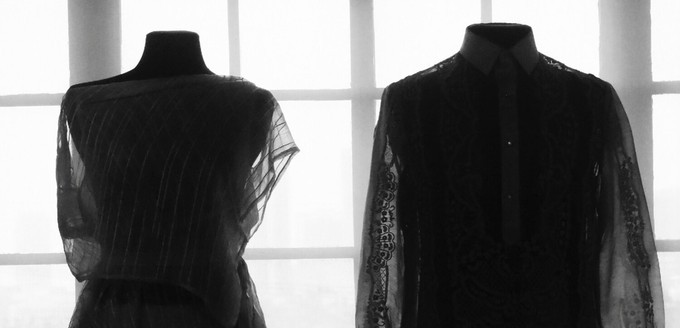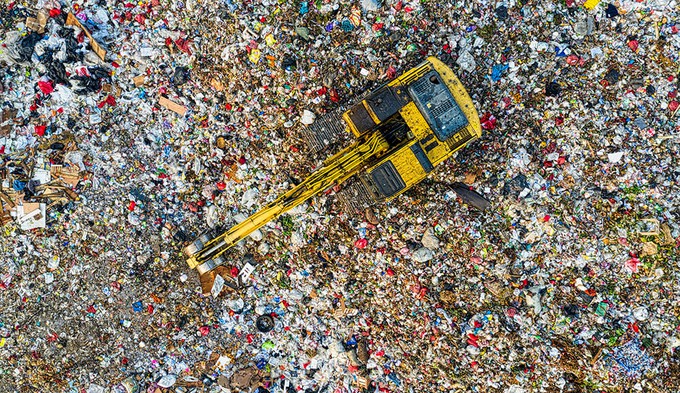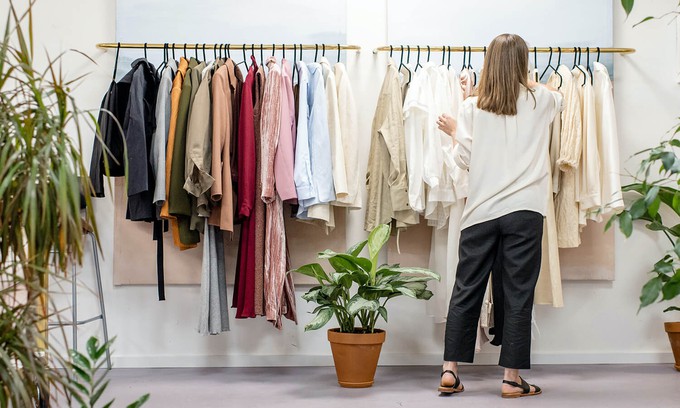- Clothes
- Bags
- Accessories
-
Inspiration
- Shoes
Brief History of Fast Fashion (& Changing Its Future Course)

We’re so used to shopping throwaway clothes that it’s hard to picture a high street without its clothing giants.
But how did fast fashion start? And, most importantly, what do its past and present say about its future?
Find out through our brief history of fast fashion.
Definition of fast fashion as we know it today
Fast fashion is a business model built on mass-producing trendy cheap clothes to follow new trends (and let’s face it: without worrying about its consequences).
Think of brands like Primark, Mango, Zara, H&M, Fashion Nova, Boohoo, SHEIN, or Asos.
How did fast fashion start? A quick history of fast fashion

- Industrial revolution – Before the late 18th century, clothing was handwoven, hand sewn and… pretty expensive. So, most people would make their own. This started to change with the industrial revolution. With its factories and textile machines, it lowered the cost of clothing and marked the beginning of mass production. While that kept growing throughout the 19th century, a lot of clothing was still manufactured at home on in small workshops
- First half of the 20th century – Standardised sizing and ready-to-wear clothes became more popular, especially during World War II. More and more clothing stores started to spring up, too (did you know that H&M opened all the way back in 1947, albeit as a single store?)
- 1960s – A new young generation could now afford to use their wages to treat themselves. They no longer wanted to copy their parents: they embraced their own identity and wanted to showcase it. So, fashion became a form of self-expression. Lots of new clothing stores opened and became mainstream
- 1970s – It wasn’t called fast fashion yet, but this seems to be when its (exploitative) business model began. Many retailers started exporting their production to faraway or developing countries. That way, they could pay their workers less (ugh!) and keep their prices low
- 1980s – Globalisation accelerated both the production and distribution process. Hand-me-down garments were still common and people were definitely buying less clothing than we are today. Still, mainstream fashion became even more about chasing new trends
- 1990s – In a way, that’s when fast fashion started! On 31st December 1989, the New York Times used that term to talk about Zara taking garments from design to stores in only two weeks. Fashion brands were now producing their clothes faster and marketing them as the latest trends. Online shopping started to become more common, too
- 2000s – Fast fashion became the new norm and eCommerce more popular. Chains like H&M, Zara, and Mango took over the high street and started moving away from fashion’s traditional seasons (spring/summer and autumn/winter). For example, Zara introduced bi-weekly deliveries of new products
- Late 2010s - 2020s – Fast fashion became even faster. Online giants like SHEIN, Asos, and Boohoo made ultra fast fashion popular, producing 52 micro-seasons a year and churning out THOUSANDS of new garments per week (or even per day). People are now buying 60% more clothes than they did in the year 2000 but only keeping them for half as long
So, when did fast fashion start?
It’s hard to pinpoint exactly when fast fashion started.
Overall, we’d say that, although the actual term was first used in the 1990s, the concept of fast fashion started in the 1970s: outsourcing production to sell trendy clothes more cheaply.
What does the history of fast fashion tell us about its future?

When looking at the history of fast fashion as well as its present, there’s one main thing we should all realise: we can’t let this be our future!
There are so many problems with fast fashion, but in a nutshell:
- It has a dreadful environmental impact and contributes to climate change
- It leads to 92m tonnes of waste every year (that’s like one truck full of clothes being dumped into landfills every second)
- It’s fuelled by sweatshops, child labour, and garment workers kept in modern slavery conditions
- It keeps getting faster! Online brands like SHEIN release 10,000 new products every single day (that’s over 3.5 million a year!)
Fast fashion just isn’t sustainable!
It’s good to see new legislation trying to slow down this hungry machine (like France’s anti-fast fashion bill and the EU’s Corporate Sustainability Reporting Directive). Those companies always seem to find a way of avoiding consequences, though, from greenwashing to dodgy supply chains.
So, in the meantime, the best thing YOU can do as a consumer is:

- Educate yourself on why fast fashion is a problem (we have some resources to help you get started!)
- Ditch fast fashion: vote with your money, and stop supporting companies that rely on overconsumption and sweatshops
- Move away from seeing clothes as throwaway items: buy and (re)wear them more mindfully from now on (for example, by purchasing fewer pieces that were designed to last, made ethically, and that you can see yourself wearing at least 30 times)
The history of fast fashion shows us that, if we don’t do something about it, it’s only going to keep getting faster.
And let’s face it: we can’t take it. So, be part of the change, and help us pull fast fashion’s brakes!
Found this helpful? Start receiving our tips and inspiration to make even more sustainable fashion choices.
Share our story
Related articles
How Many Times Do We Wear Our Clothes? (Not Enough!)
Sadly, we keep buying more but use them less than ever before. Find out how many times we wear our clothes and how to ditch this unsustainable mindset.
The Devil Wears… Ultra Fast Fashion. Do You?
Sweatshops, environmental damage, and a negative effect on young consumers’ mental health: meet ultra fast fashion and its sinful consequences.
How to Ditch Fast Fashion & Switch to Ethical Clothes: 10 Tips
Ready to take the first step towards a more sustainable wardrobe? Here are some practical tips to ditch fast fashion and discover ethical alternatives.
Project Cece is a platform that collects ethical fashion from vetted brands and shops in one place. Browse ethical fashion for women and men and find items that fit your style, budget and values!


